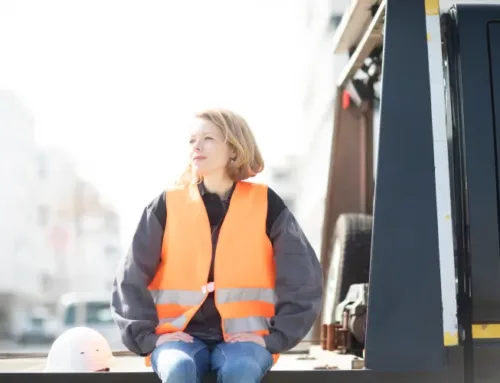Retroreflective headlamps serve as a high-visibility complement to the road markings of streets, highways, and highways. They are one of the most important elements to ensure the safety of vehicular traffic.
Retroreflective headlight catchers serve to alert, guide and inform drivers in full vehicular traffic. These are made up of one or two pieces, at most. Their retroreflection is significant to be seen at a long distance, from vehicles that move at a certain speed.
Retroreflective headlamps serve as a high-visibility complement to the road markings of streets, highways, and highways. They are one of the most important elements to ensure the safety of vehicular traffic.
Retroreflective headlight catchers serve to alert, guide and inform drivers in full vehicular traffic. These are made up of one or two pieces, at most. Their retroreflection is significant to be seen at a long distance, from vehicles that move at a certain speed.
Classification of retroreflective headlamps
Retroreflective headlamps are classified according to their use and nature. According to their use, the permanent ones are white and the temporary ones, orange. Considering their nature, there are three codes, depending on the material used: glass (code 1), polymeric (code 2) and organic polymeric (code 3).
How to adapt each retroreflective headlamp according to its location and the surface used
Asphalt
The retroreflective headlight catchers are embedded or fixed in the roadway as an orientation or guide to alert about the different road conditions that drivers who circulate on that road must know. These must be applied with specific adhesives for this surface, such as thermo-adhesive single-dose tablets.
STIMSONITE 980: this type of ABS polymer headlamp is designed to be installed in low light conditions, especially in rainy conditions. It is resistant to impacts, abrasion and extreme temperatures, both high and low.
STIMSONITE 101: they are fastened by a malleable iron support in the form of a catamaran. They can be placed in situations of high roadway in winter, with a self-adhesive system that allows a simple and fast replacement.
STIMSONITE 201: made of high-strength polycarbonate, this model of pavement headlamps has the same visibility properties and provides the same advantages as the Stimsonite 101.
STIMSONITE 381C: with a high-strength polycarbonate support, its main virtue is the Click Stud system, which allows an agile and fast replacement, being its repair economical and safe.
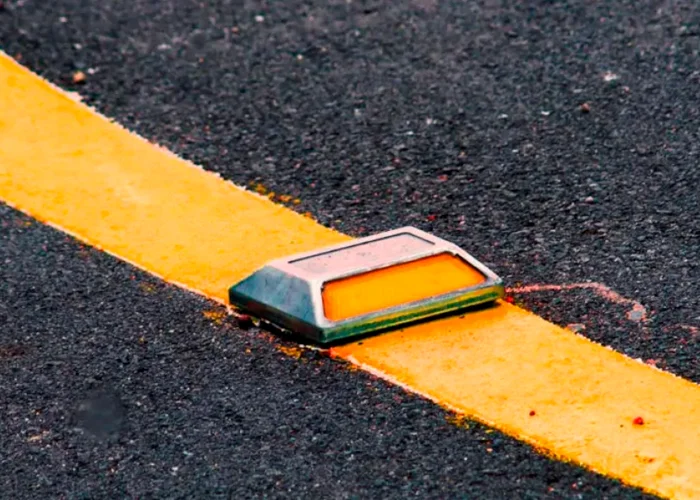
Concrete Barrier
Concrete barrier headlamps must protect drivers, cushioning a possible impact and preventing the vehicle from leaving the road. They can be placed on the road or road layout using prefabricated modules, or with an in-situ execution.
The headlamps used on this surface, through their high reflective power, function as vertical signalling elements. The clamping system works by rivets.
DBH model: they can undergo a strong elastic deformation, and then recover their original shape. It has four anchor points so that the piece is adjusted as required on the road, with a synthetic rubber support. The smooth base also allows installation with adhesive. Its transparency lenses are much more resistant to ultraviolet rays, avoiding discolourations and other forms of retroreflection. You can choose between DBH 1 and DBH 2.
DNJ model: these headlight catchers for concrete barrier are useful in those circumstances that require occupying less space on the road and maintaining visibility. They have a high-density polyethylene support, which is collapsible, to split in case of an accident. The headlamp is fixed by two support points with two openings for easy installation by screws. There are two varieties of the DNJ model: the DNJ 1 and the DJN 2.
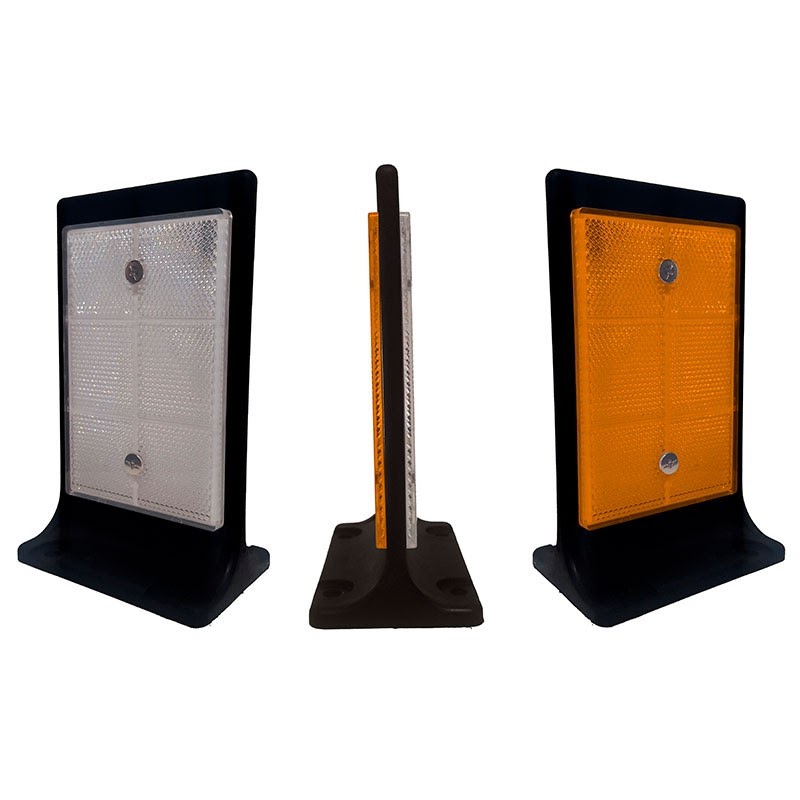
Bionda barrier
They are used as vehicle containment barriers on roads and public roads. They sharply reduce the negative consequences and exits the road due to accidents or collisions. Furthermore, they also prevent falls down steep slopes or the invasion of other roads. Headlamps of this type help the signalling of these galvanized steel barriers in a protection system designed especially for motorcyclists.
DTB1: it is a lens of high retroreflection and great durability, made of high quality polymethylmetracrylate.
DTB 2 N: has a single side, double structure and closed anchorage. Its use is enhanced on highways and highways, which require high winter visibility in snowfall. It offers the robustness of the DBT2 structure and the functionality of DBT1.
DTB3: it is composed of two sides and open anchorage. It is resistant to winter roads and allows a quick replenishment.
DTB4: it has a lateral closed anchorage, with the resistance of DTB2 and the speed of installation of DTB3.
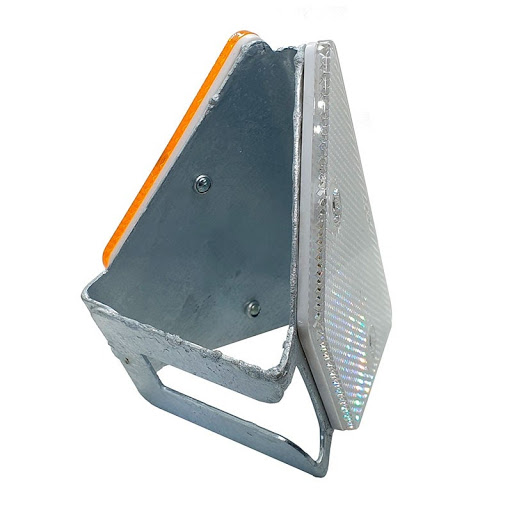
Edge milestone
This is a beacon element placed vertically on both sides of the road. Its structure consists of a hollow white polymer pole, with a black stripe at the top that slopes towards the road. Horizontal signalling elements, known as retro-reflectors, are installed in the strips, an optical system that reflects the light from the headlights of vehicles with one or more flat lenses, without inclination, which refract it.
They serve to delimit the margins of the road and, in turn, improve the visibility of the route to drivers. Its reflective nature improves visibility, both day and night, or on sharp curves. The size of the retro-reflectors – which can be round, white vertical or amber vertical – depends exclusively on the characteristics of the road and the two types of edge thread.
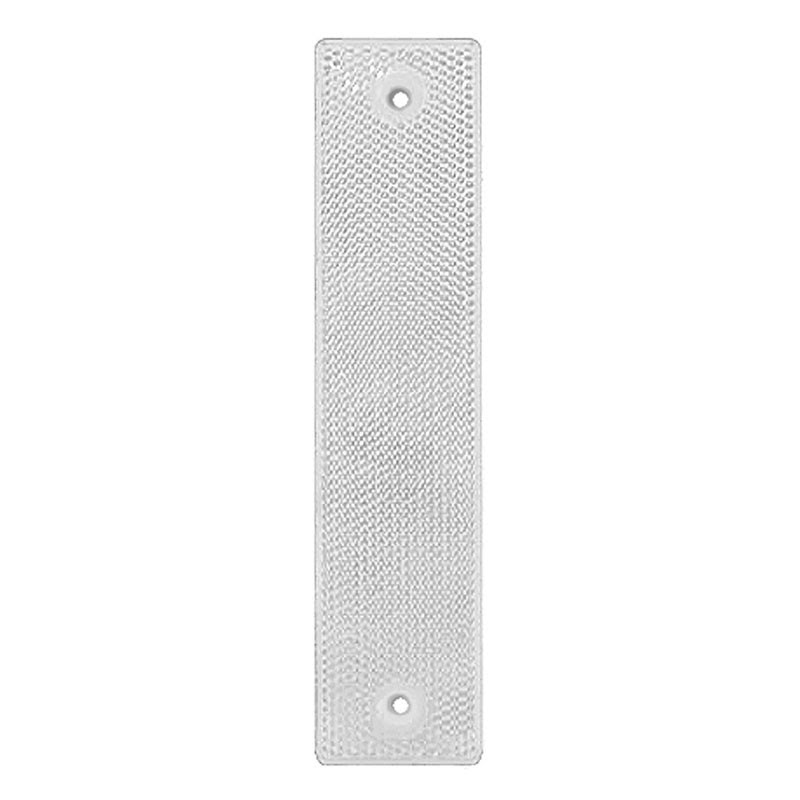
TS2 Ibérica: reliable and quality headlamp catchers
The different models of retroreflective headlight catchers of T2S Ibérica are designed to facilitate both horizontal and vertical signalling of public and vehicular roads. You can consult our road solutions by requesting our headlamp catchers by phone at +34 93 848 05 68, by email to [email protected] or by filling out our contact form.



